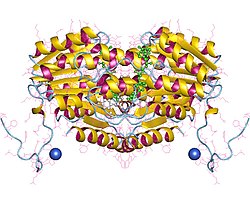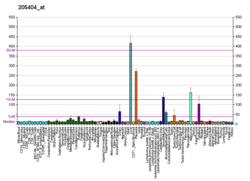| HSD11B1 |
|---|
 |
| Available structures |
|---|
| PDB | Ortholog search: PDBe RCSB |
|---|
| List of PDB id codes |
|---|
4P38, 1XU9, 2BEL, 2ILT, 2IRW, 2RBE, 3BYZ, 3BZU, 3CH6, 3CZR, 3D3E, 3D4N, 3D5Q, 3EY4, 3FCO, 3FRJ, 3H6K, 3HFG, 3OQ1, 3PDJ, 3QQP, 3TFQ, 4BB5, 4BB6, 4C7J, 4C7K, 4HFR, 4HX5, 4IJU, 4IJV, 4IJW, 4K1L, 4YYZ, 1XU7 |
|
|
| Identifiers |
|---|
| Aliases | HSD11B1 , 11-DH, 11-beta-HSD1, CORTRD2, HDL, HSD11, HSD11B, HSD11L, SDR26C1, hydroxysteroid (11-beta) dehydrogenase 1, hydroxysteroid 11-beta dehydrogenase 1 |
|---|
| External IDs | OMIM: 600713; MGI: 103562; HomoloGene: 68471; GeneCards: HSD11B1; OMA:HSD11B1 - orthologs |
|---|
| EC number | 1.1.1.146 |
|---|
|
|
|
|
|
| Wikidata |
|











